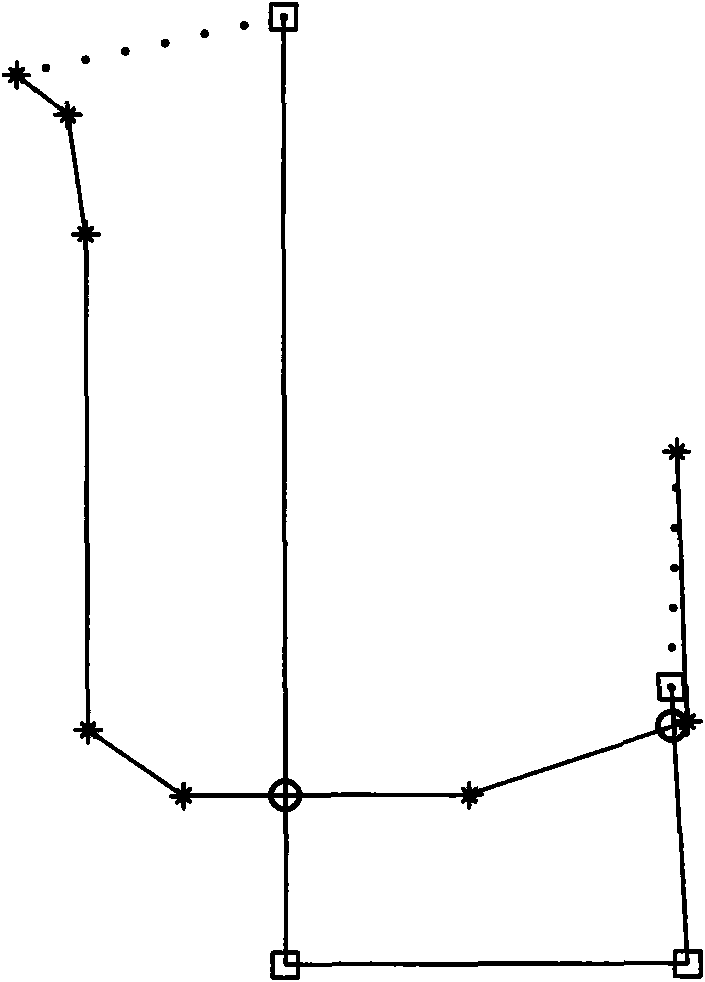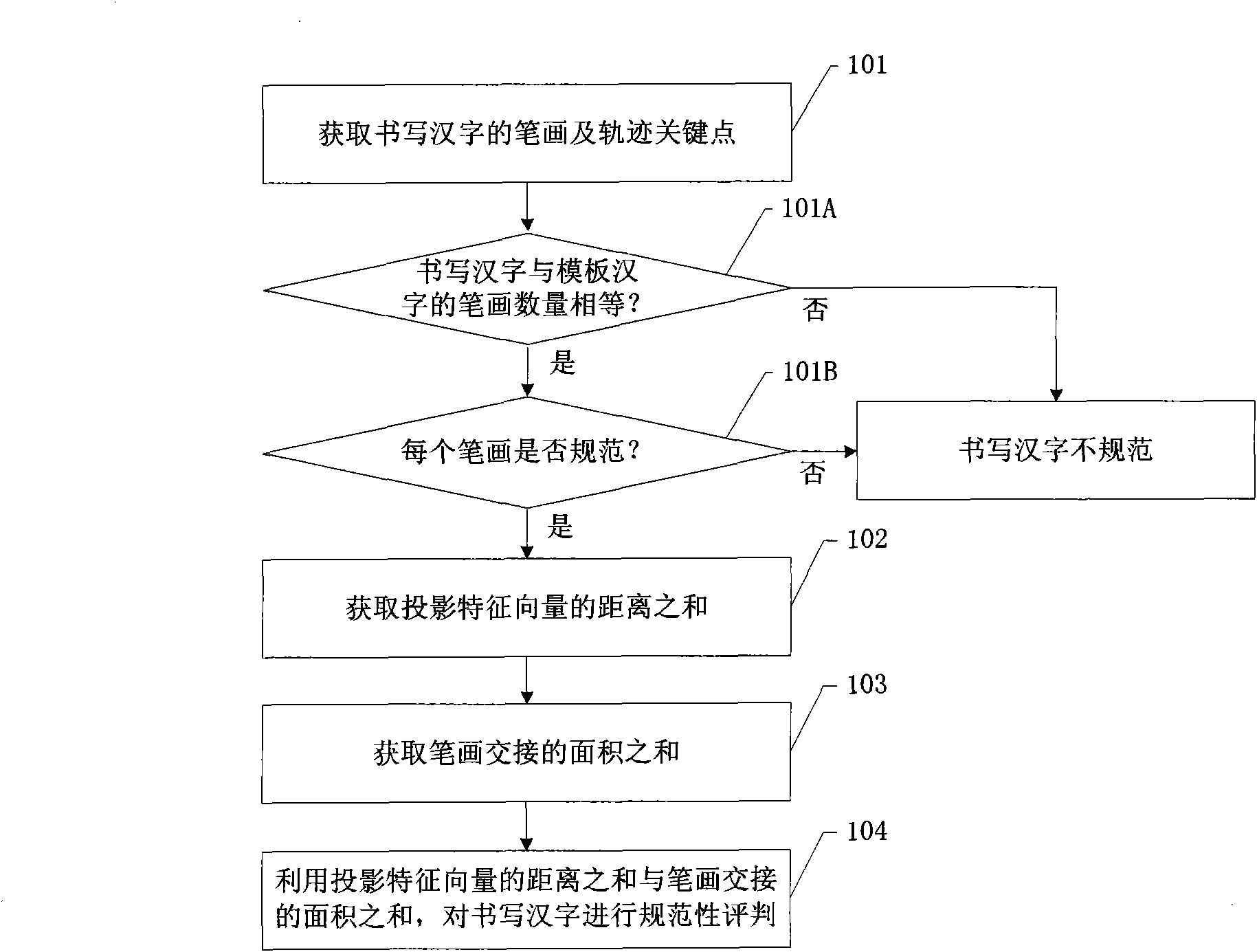Method and device for judging standardability of handwritten Chinese character
A normative, Chinese character technology, applied in character and pattern recognition, image data processing, instruments, etc., can solve problems such as poor evaluation, difference, fatigue, etc.
- Summary
- Abstract
- Description
- Claims
- Application Information
AI Technical Summary
Problems solved by technology
Method used
Image
Examples
Embodiment 1
[0080] see figure 1 figure 2 , the present invention will be described in detail below in conjunction with the accompanying drawings.
[0081] A method for writing normative evaluation of Chinese characters, comprising the following steps:
[0082] Step 101, obtain the strokes of written Chinese characters, assuming that there are n strokes in total; using the Douglas-Puke algorithm to compress the vector data of each stroke to obtain the key points of the trajectory of each stroke; assuming that the i-th stroke has p key points of trajectory , denote the t-th trajectory key point of the i-th stroke as a t , two adjacent trajectory key points form a stroke segment, the i-th stroke has p-1 stroke segments in total, and the d-th stroke segment of the i-th stroke is expressed as v d , wherein, i=1, 2, . . . , n, t=1, 2, . . . , p, d=1, 2, . . . , p−1.
[0083] The numbering sequence of the key points of the trajectory of a stroke is the writing sequence of the stroke, and th...
Embodiment 2
[0118] see image 3 Figure 4 The difference between this embodiment and the first embodiment is that after step 101, step 101A and step 101B are further included.
[0119] Step 101A, obtaining the number of strokes of the template Chinese character; if the number of strokes of the written Chinese character is not equal to the number of strokes of the template Chinese character, it is determined that the written Chinese character is an irregular written Chinese character.
[0120] Step 101B, this step is used to judge the normativeness of each stroke of writing Chinese characters, including the following steps:
[0121] Step A21, set i=1.
[0122] Step A22, obtain the stroke segment v of the i-th stroke of the written Chinese character d The stroke segment u of the i-th stroke of the template Chinese character cThe number m of intersection points, determine whether the number m of intersection points is not greater than the preset threshold value, if yes, continue to step ...
Embodiment 3
[0132] see Figure 5 , a device for writing normative evaluation of Chinese characters, comprising:
[0133] Written Chinese character trajectory recognition device 201 is used to obtain the strokes of written Chinese characters, assuming that there are n strokes in total; adopting the Douglas-Puke algorithm to compress the vector data of each stroke to obtain the key points of the trajectory of each stroke; assuming that the i-th stroke There are p trajectory key points in total, and the t-th trajectory key point of the i-th stroke is expressed as a t , two adjacent trajectory key points form a stroke segment, the i-th stroke has p-1 stroke segments in total, and the d-th stroke segment of the i-th stroke is expressed as v d , wherein, i=1, 2, . . . , n, t=1, 2, . . . , p, d=1, 2, . . . , p−1. The device 201 for identifying traces of written Chinese characters may be an electronic tablet, a stylus, a touch screen, and the like.
[0134] The stroke projection feature simila...
PUM
 Login to View More
Login to View More Abstract
Description
Claims
Application Information
 Login to View More
Login to View More - R&D
- Intellectual Property
- Life Sciences
- Materials
- Tech Scout
- Unparalleled Data Quality
- Higher Quality Content
- 60% Fewer Hallucinations
Browse by: Latest US Patents, China's latest patents, Technical Efficacy Thesaurus, Application Domain, Technology Topic, Popular Technical Reports.
© 2025 PatSnap. All rights reserved.Legal|Privacy policy|Modern Slavery Act Transparency Statement|Sitemap|About US| Contact US: help@patsnap.com



